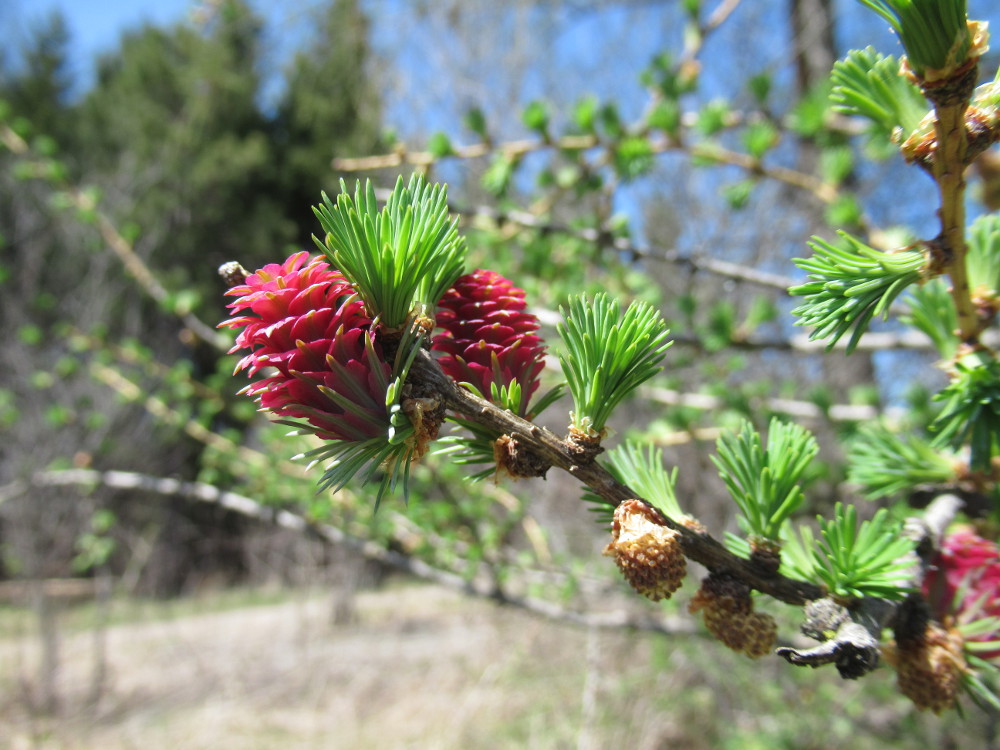
In the world, there are only 20 species of deciduous conifers, an odd combination of a coniferous tree that drops its needles in the autumn like a deciduous tree. One of those is the tamarack, larix laricina.
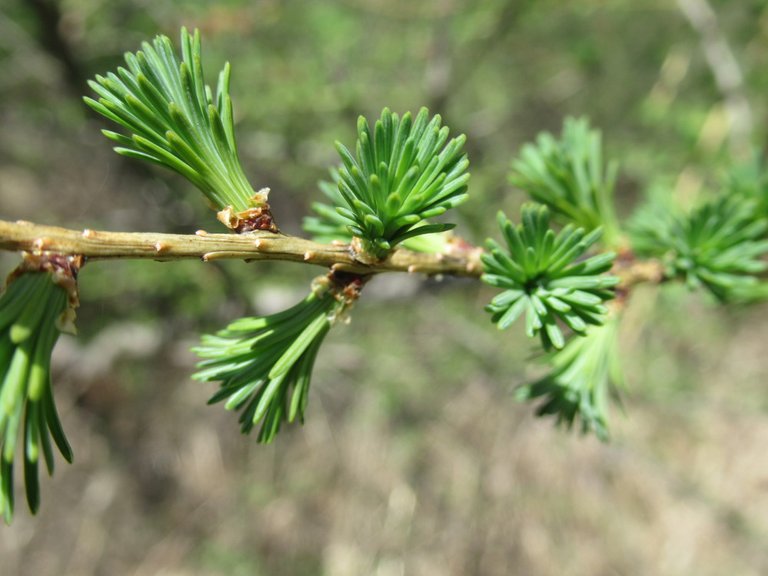
The tamarack is a member of the larch family. "Tamarack" comes from the Algonquian and means "wood used for snowshoes." American larch, Alaska larch, eastern larch, black larch, red larch, and hackmatack, and in French, Mélèze laricin, are other common names.
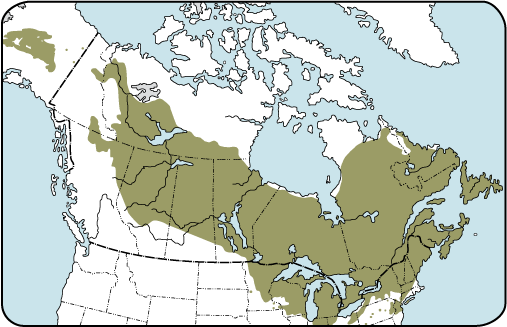
Its natural range map source is across North America from the west to the east, and as far north as Alaska. A medium sized tree, it reaches a height of only 5 m (15') near the Arctic tree line, surviving temperatures down to -65 C (-85°F), while reaching 10-20 m (33-66') tree in its southern range.
Spring
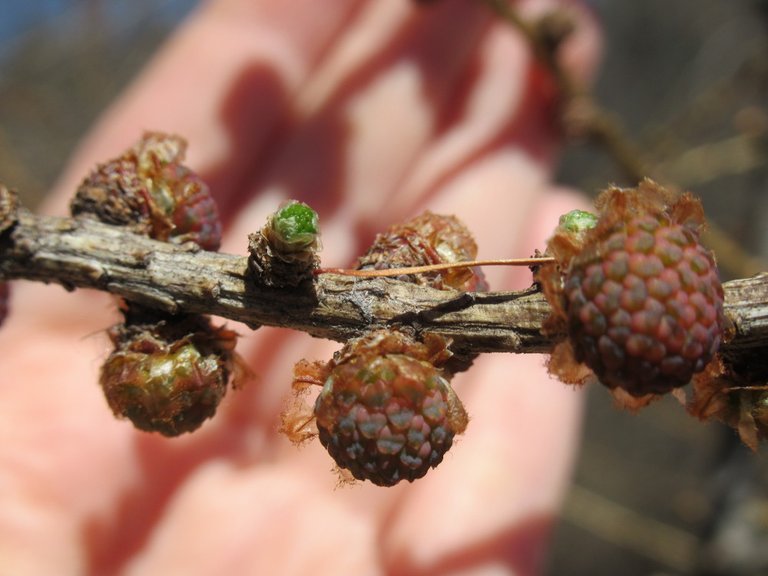
The tree comes alive in spring. Above, what looks like berries will become female cones while the green buds are the start of needles. Tamaracks are monoecious so there are separate male and female cones that are wind pollinated. Cone production begins when the tree is between 15-40 years.
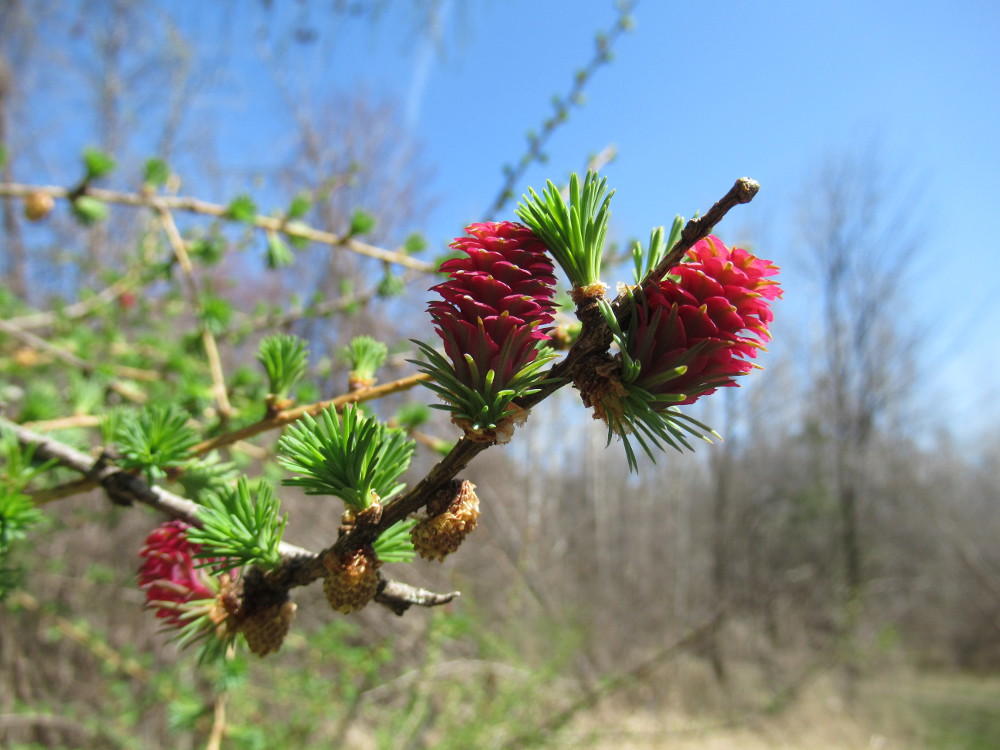
A little later, very pretty.
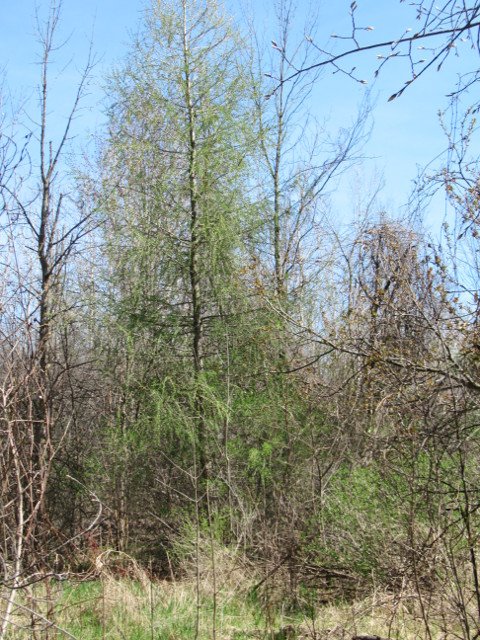
The trees prefer full sun and are one of the first to reappear after a forest fire. They are tolerant of a wide range of soil types but require moist soil so they are often found in swampy areas. However, being shallow rooted, they are easily killed by both drought and flooding.
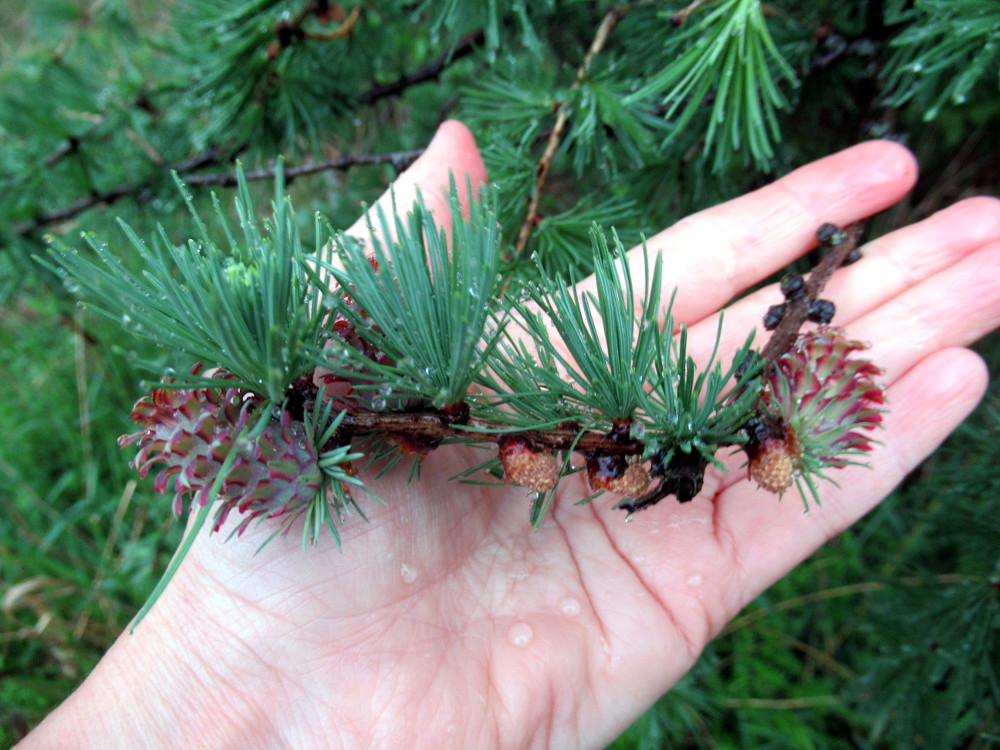
The needles have reached their full length.
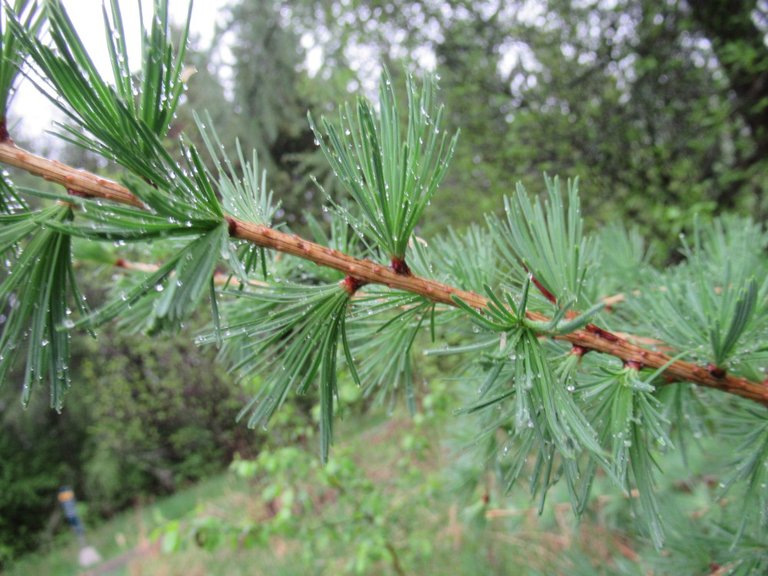
Tamarack needles have no protective waxy coating like that found on other coniferous trees. The lack of coating helps with photosynthesis and the needles are extremely soft since they are renewed each year.
An interesting fact is that a cross section of its needle is a triangle.
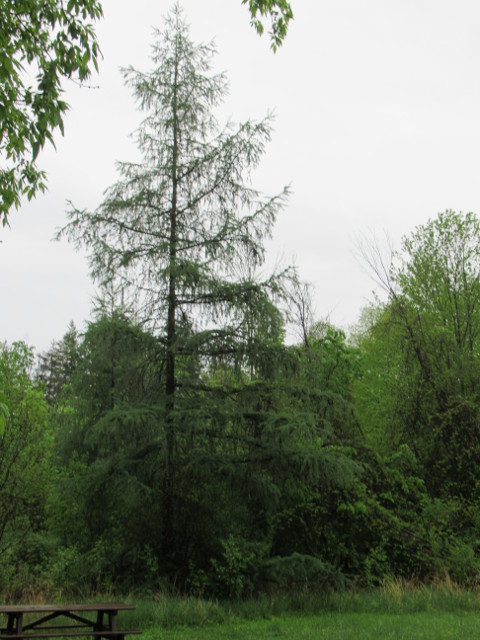
This is the typical shape of a tamarack tree. The branches are longer at the bottom, pointing slightly upwards while the smaller branches hanging off them hang down.
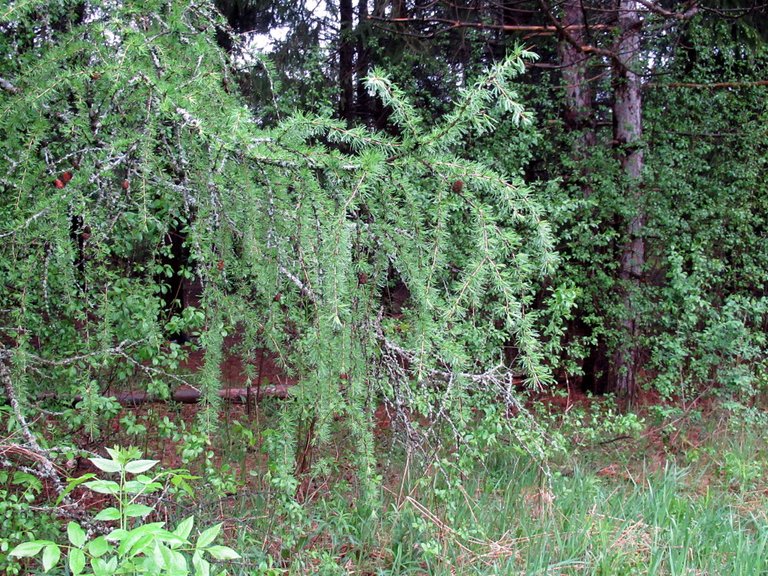
This is another example.

There is a sparseness to the tree even when the needles have finished growing.
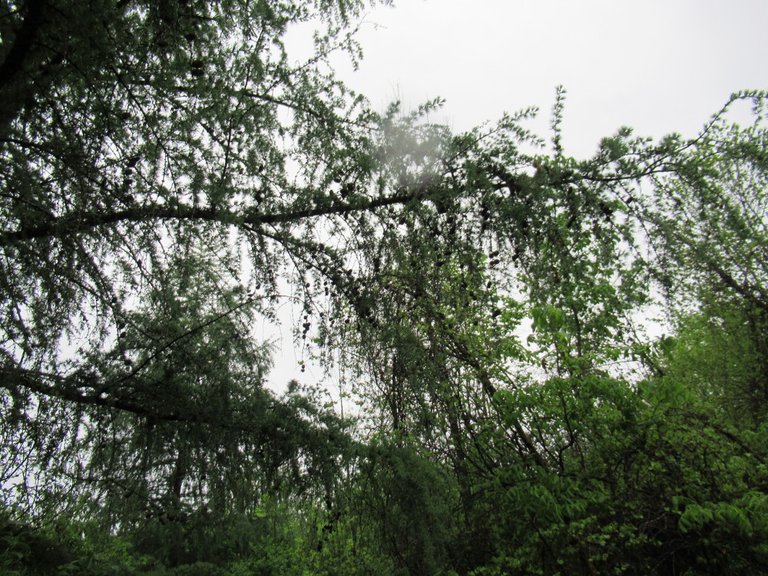
On older growth, you can see the many small cones from previous years. Tamarack are not long-lived trees reaching 200-300 years in ideal conditions.
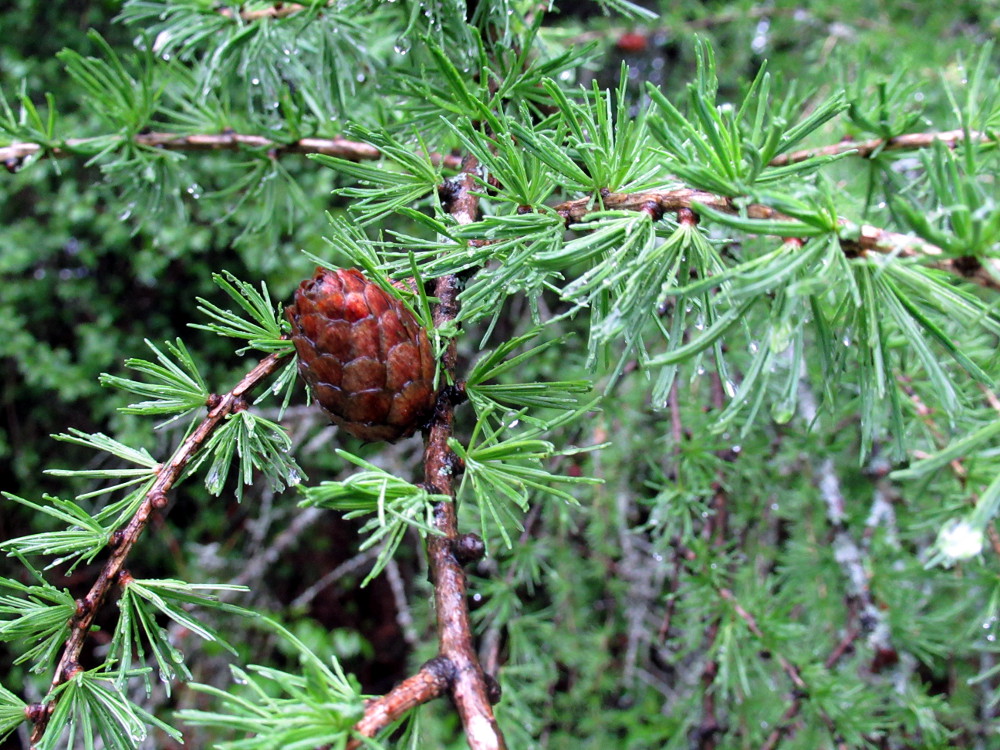
The tree will look much like this for the summer.
Tamaracks are relatively slow growing trees yielding a hard softwood. The abundant resin in the wood makes it rot resistant and suitable for fence posts, boat building, and railway ties. It also stays flexible when cut into thin strips.
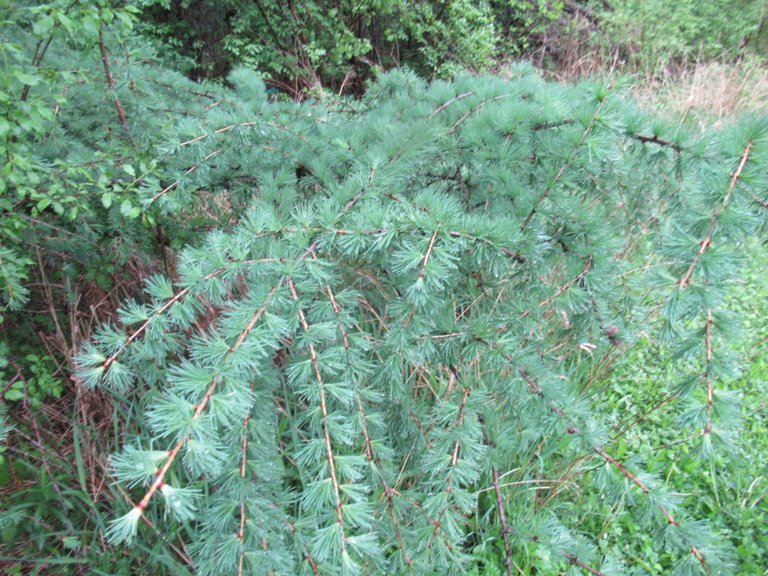
These last 8 photos were taken yesterday. For reference, it's our tulip season now.
Autumn
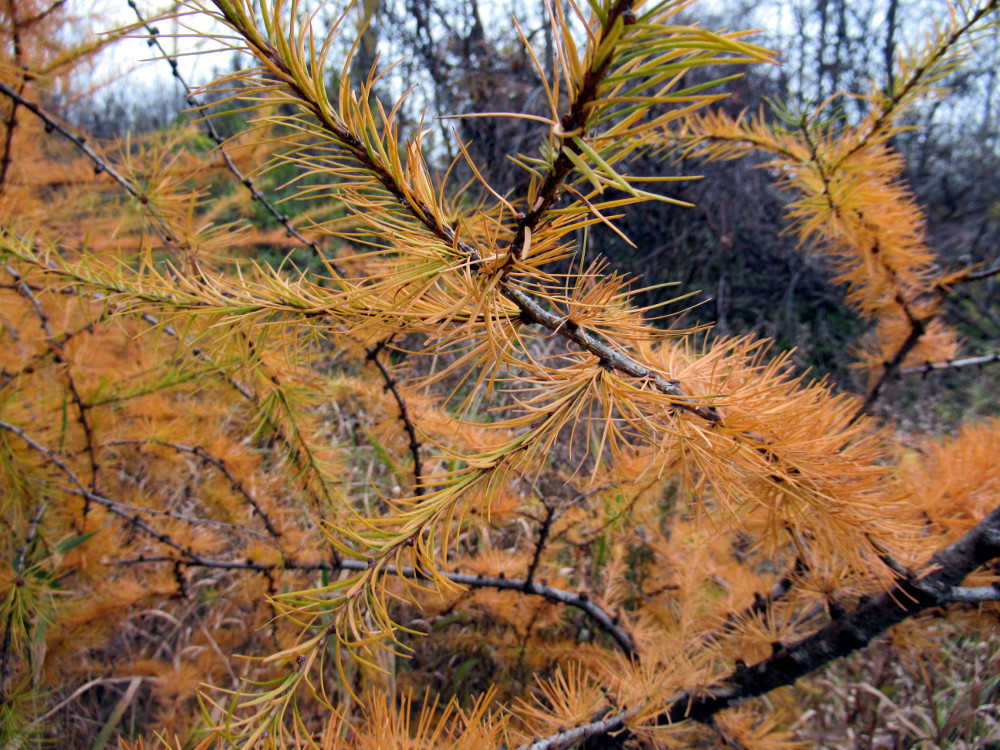
In the autumn, the needles change to a beautiful golden colour before dropping.
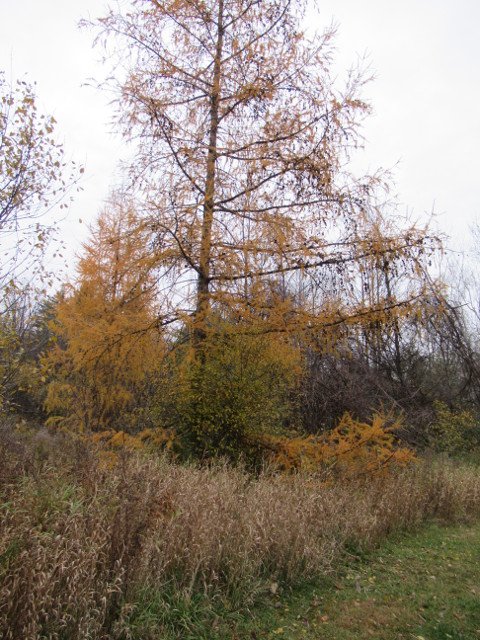
Winter
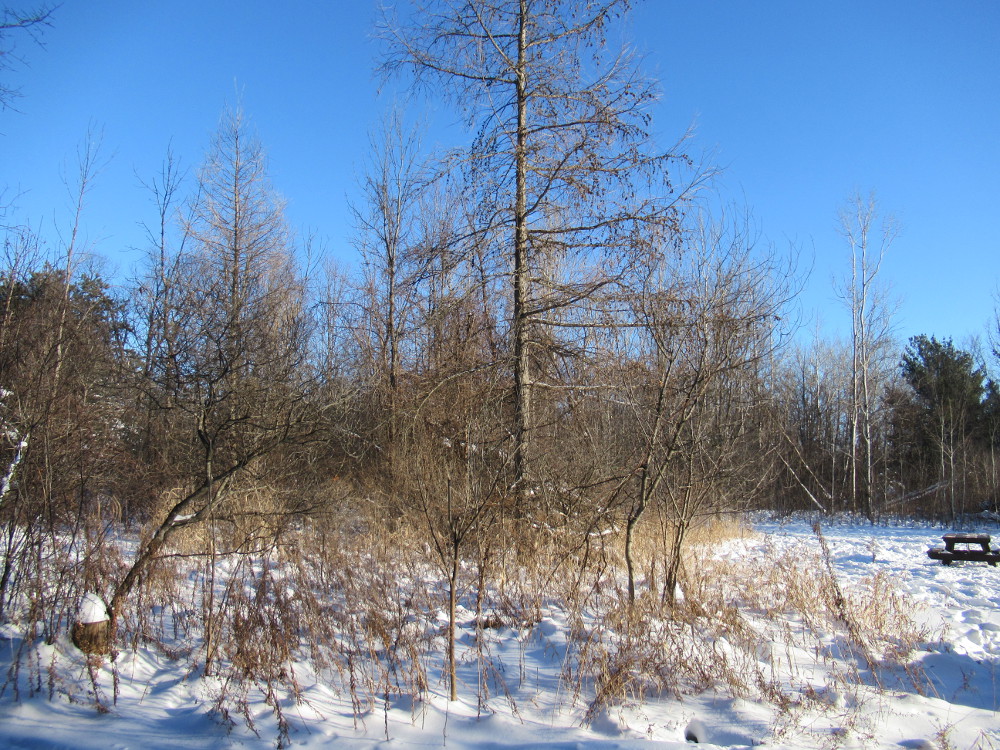
For much of the winter, light levels are lower so it doesn't benefit the tree to have needles.
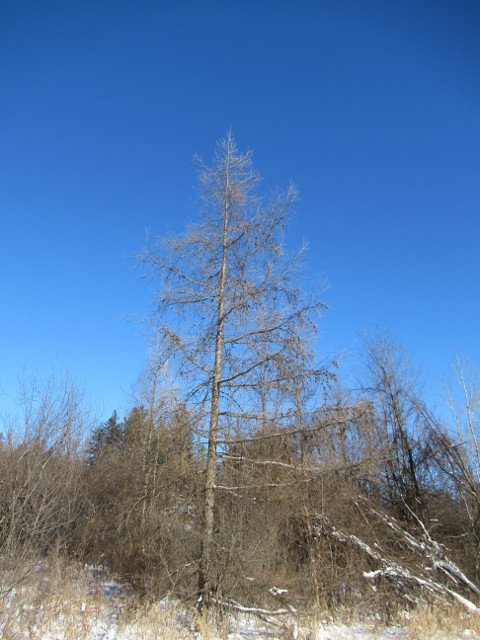
A young tamarack starts out with very smooth bark. It develops a greyish pink bark that flakes easily. The tree can reach a diameter of 60 cm (24").

In winter, the tree is full of old cones.

Indigenous peoples used the tamarack for building and had medicinal uses for it.
References
Wikipedia Larix laricina
Yale Nature Walk: Tamarack
A Tamarack by Any Other Name
Images
Photos by @kansuze taken with my Canon SX620 HS in Kanata (Ottawa), Canada.

Enjoy!
@kansuze